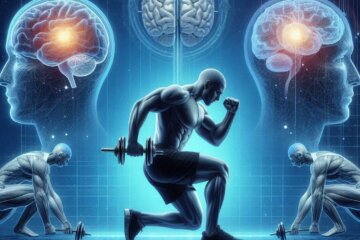Understanding the Flow of Time: Future, Present, and Past
Have you ever thought about the direction of time flow? Time is often perceived as an ever-flowing river, guiding our lives through a continuous journey from the past, through the present, and into the future. Traditionally, time is perceived as a linear progression from the past to the future, a view deeply ingrained in our culture, philosophy, and daily lives (Craig, 2001). However, exploring the concept of time flowing from the future to the present and reflecting back to the past offers a unique philosophical perspective. This perspective not only challenges conventional wisdom but also provides profound insights into how we live our lives (Barbour, 1999). Moreover, interpreting this theory of time flow can offer significant psychological benefits.
The Conventional View: Past to Future
In the conventional view, the past is a repository of experiences and memories, the present is where life unfolds, and the future is a realm of possibilities and aspirations (Rovelli, 2018). This linear progression is supported by the concept of the “arrow of time,” which is tied to the second law of thermodynamics and the increase of entropy (Eddington, 1928). Historically, this view has been reinforced by religious, cultural, and scientific perspectives (Craig, 2001). For instance, many ancient civilizations, including the Greeks and Egyptians, had linear conceptions of time. Religious traditions, such as Christianity and Islam, often describe time as a journey from creation to an eventual end. The Enlightenment and scientific revolutions further cemented this linear perspective, with advancements in physics and the understanding of entropy providing a scientific basis for the arrow of time.
The Alternative View: Future to Present to Past
In contrast, the idea of time flowing from the future to the present and then to the past introduces a novel way of thinking about our existence. This alternative view suggests that our understanding and actions are primarily driven by our visions and expectations of the future. This perspective posits that the future influences our present decisions, which in turn shape our interpretations of the past. This idea aligns with certain philosophical theories and modern physics concepts, such as the “block universe” theory, where all points in time coexist and the flow of time is an illusion (Barbour, 1999).
The Future: A Canvas of Possibilities
The future is an unwritten canvas, full of possibilities and potential. It is where our dreams, aspirations, and plans reside. While the future is uncertain and unpredictable, it profoundly influences our present actions. Setting goals, making plans, and envisioning our desired outcomes motivate us to take proactive steps toward achieving our dreams. This forward-thinking perspective fosters optimism and a sense of purpose. Additionally, by focusing on the future, we can reframe our cognition to believe that negative events from the past will not necessarily repeat themselves, freeing us from the grip of past negative thoughts. This cognitive reframing allows us to move forward with confidence and hope, knowing that our past does not define our future.
For instance, consider how liberating it feels to let go of past failures by focusing on future successes. This shift in perspective empowers us to take bold steps toward our goals, unburdened by the weight of past mistakes. We become architects of our destiny, painting our future with the vibrant colors of hope and possibility.

Psychological Benefits:
- Motivation: Future-oriented thinking provides motivation and a sense of purpose.
- Optimism: Planning for a positive future fosters optimism and hope, crucial for mental health.
- Proactivity: This perspective encourages proactive behavior, helping us take control of our lives and make meaningful progress.
- Cognitive Reframing: Focusing on the future can help us reframe our thoughts, reducing the impact of past negative experiences.
The Present: The Intersection of Time
The present is the intersection where the future’s potential meets the past’s legacy. Embracing the present means being mindful, aware, and fully engaged in the here and now. Mindfulness practices, such as meditation, can help us stay grounded in the present, allowing us to appreciate the beauty of the moment and make conscious decisions that align with our future goals and past experiences.
Living in the present can be immensely rewarding. It’s the time when we can fully experience life, savoring each moment without the distractions of past regrets or future anxieties. When we are present, we can respond more effectively to the world around us, making decisions that are aligned with our true values and aspirations.
Psychological Benefits:
- Reduced Stress: Focusing on the present moment can significantly reduce stress and anxiety.
- Enhanced Well-being: Mindfulness and present-focused activities promote a sense of well-being and contentment.
- Improved Concentration: Being present enhances our ability to concentrate and perform tasks more effectively.
The Past: A Reflection of Choices
The past is like a vast repository, holding a wealth of experiences, memories, and lessons. In this alternative view, the past is continually reinterpreted based on our current experiences and future aspirations. Reflecting on the past allows us to learn from our mistakes, cherish our achievements, and understand the events that have brought us to our current state. However, it is crucial to avoid becoming overly fixated on the past, which can lead to feelings of regret or nostalgia.
Reflecting on the past with a balanced perspective can be a powerful tool for growth. By acknowledging our past experiences, both good and bad, we can extract valuable lessons that inform our present decisions and future plans. This reflective process fosters a deeper understanding of ourselves and helps us build resilience for future challenges.
Psychological Benefits:
- Self-awareness: Understanding our past helps us gain insights into our behaviors and patterns.
- Resilience: By acknowledging and learning from past challenges, we build resilience.
- Closure: Reflecting on past experiences can provide a sense of closure and help us move on from unresolved issues.
Interconnectedness of Future, Present, and Past
The future, present, and past are intricately connected in this alternative view. Our vision of the future informs our present actions, which in turn shape our reinterpretation of the past. By understanding this interconnectedness, we can make more informed decisions that consider our future aspirations, align with our present values, and integrate lessons from the past. This holistic approach to time allows us to lead a more balanced and fulfilling life.
This interconnected perspective enables us to live with greater coherence and balance. We become more adaptable, better able to navigate the complexities of life with grace and resilience. By honoring the past, engaging with the present, and planning for the future, we create a life that is rich in meaning and purpose.
Psychological Benefits:
- Balance: Recognizing the interconnectedness of time helps us balance reflection, present engagement, and future planning.
- Coherence: Understanding how our future, present, and past are linked creates a coherent narrative of our lives, enhancing our sense of identity and purpose.
- Adaptability: This perspective fosters adaptability, enabling us to navigate life’s changes with greater ease and resilience.
Practical Tips for Navigating Time
- Envision Your Future: Regularly take time to envision your future. Set realistic and achievable goals that inspire you and break them down into actionable steps.
- Embrace the Present: Practice mindfulness to stay grounded in the present moment. Engage fully in your activities, savor your experiences, and be aware of your thoughts and emotions without judgment.
- Reflect on the Past: Reflect on your past experiences with an eye toward learning and growth. Identify key lessons learned and use them to inform your current decisions. Journaling can be a helpful practice for this reflection.
- Balance Future and Present Actions: Find a balance between future planning and present engagement. Ensure that your current actions align with your long-term goals while also appreciating the present moment.
- Adapt to Change: Accept that change is a constant in life. Be flexible and adaptable, allowing yourself to adjust your plans and expectations as new information and circumstances arise.
Conclusion
Understanding the flow of time and its dimensions helps us lead more meaningful and fulfilling lives. By envisioning the future, embracing the present, and reflecting on the past, we can navigate our life’s journey with greater awareness and purpose. Time is a precious resource, and by appreciating its flow, we can make the most of every moment. The psychological benefits of interpreting this theory further enhance our ability to lead balanced, resilient, and fulfilling lives, making the most of our journey through time. The alternative view of time flowing from the future to the present and reflecting on the past challenges us to rethink our perceptions and provides a richer, more dynamic understanding of our existence.
References:
- Craig, W. L. (2001). Time and Eternity: Exploring God’s Relationship to Time. Crossway.
- Eddington, A. S. (1928). The Nature of the Physical World. Macmillan.
- Barbour, J. (1999). The End of Time: The Next Revolution in Physics. Oxford University Press.
- Rovelli, C. (2018). The Order of Time. Riverhead Books.
- Seligman, M. E. P. (2002). Authentic Happiness: Using the New Positive Psychology to Realize Your Potential for Lasting Fulfillment. Free Press.
- Snyder, C. R. (2000). Handbook of Hope: Theory, Measures, and Applications. Academic Press.
- Kabat-Zinn, J. (1994). Wherever You Go, There You Are: Mindfulness Meditation in Everyday Life. Hyperion.
- Csikszentmihalyi, M. (1990). Flow: The Psychology of Optimal Experience. Harper & Row.
- Bandura, A. (1997). Self-Efficacy: The Exercise of Control. W.H. Freeman.
- Pennebaker, J. W




0 Comments